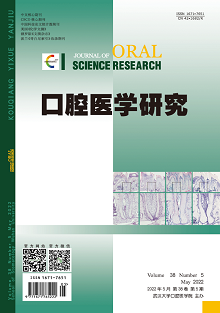|
|
Effects of Sandwich Technology and Occlusal Angle of Different Filling Materials on Stress Distribution of Non-caries Cervical Lesions
LIU Xiao, CHEN Xi, LI Bao, MA Gailan, GONG Yuejun, GUO Tao
2022, 38(5):
447-453.
DOI: 10.13701/j.cnki.kqyxyj.2022.05.012
Objective: To analyze the effects of different filling materials and occlusal angles on the stress distribution of mandibular first premolars with non-caries cervical lesions by three-dimensional finite element method. Methods: A three-dimensional finite element model of mandibular first premolars with non-caries neck defect was established as control group. Four groups of material were used as the experimental group. Group A: 3M Filtek Z350XT resin-glass ionomer cement. Group B: 3M Filtek Z350XT resin-Cention N. Group C: 3M Filtek Z350XT Flowable Resin-Glass ionomer Cement. Group D: 3M Filtek Z350XT Flowable Resin -Cention N. All models were given a vertical load (0°) at the buccal tip and a lateral load (30°, 45°, 60°) at the side of the buccal tip with 100N each, and the stress distribution was analyzed using ANSYS 17.0. Results: (1) In the control group, the Von Mises stress peak value increased by 49.3%, 222.4%, and 376% under lateral loading compared with vertical loading, respectively. Compared with the control group, the dental tissue stress was significantly reduced in groups A, B, C, and D after filling, but there was only slight difference among groups. (2) With the increase of load angle, the stress peak value (MPa) of inner material was D>B>C>A. (3) With the increase of loading angle, the Von Mises stress peak of the outer material was A>B>C>D. (4) With the increase of loading angle, the stress peak value (Mpa) of adhesive in vertical loading was C>D>A>B, and the order of peak Von Mises stress in lateral loading was A>B>C>D. Conclusion: 3M Filtek Z350XT Flowable resin-Cention N material combination has more advantages in repairing the mandibular first premolars with non-caries cervical lesions under the same occlusion condition.
References |
Related Articles |
Metrics
|

